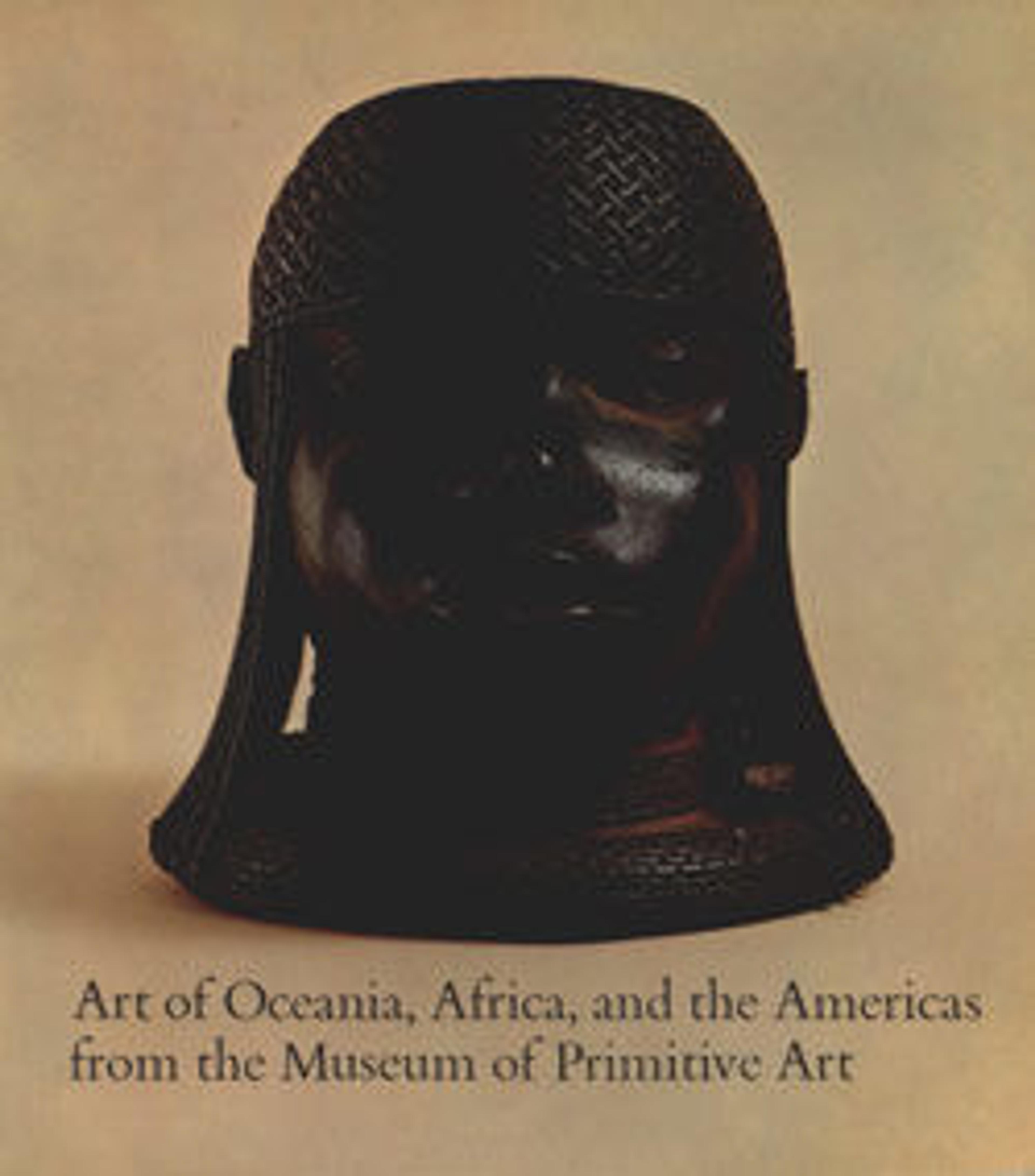Suspension Hook (Samban or Tshambwan)
Iatmul suspension hooks have both utilitarian and ceremonial functions. Suspended from the rafters by a cord, they are used to safeguard food, clothing, and other items, which are placed in baskets or string bags and hung from the hook-shaped prongs at the base to keep them out of reach of vermin. Most hooks are adorned with representations of ancestral spirits and totemic animals associated with the owner’s clan. In the past, some suspension hooks, especially those representing waken, the most powerful Iatmul supernatural beings, served as sacred images through which the supernatural beings they depicted could be consulted. Before embarking on a raid or hunting expedition, men gathered within the ceremonial house to consult the waken through the hook bearing its image. Offerings of chickens, betel nut, or other items were hung from the hook and then consumed by a human “attendant,” who went into a trance during which the waken spoke through him, providing advice. Primarily functional, household suspension hooks were also used to contact spirits about more minor matters.
Artwork Details
- Title:Suspension Hook (Samban or Tshambwan)
- Date:late 19th–early 20th century
- Geography:Papua New Guinea, Mindimbit or Angriman village (?), Middle Sepik River
- Culture:Iatmul people
- Medium:Wood, paint, fiber
- Dimensions:H. 16 1/2 x W. 23 7/8 x D. 3 3/8 in. (41.9 x 60.6 x 8.6 cm)
- Classification:Wood-Sculpture
- Credit Line:The Michael C. Rockefeller Memorial Collection, Gift of Nelson A. Rockefeller, 1972
- Object Number:1978.412.740
- Curatorial Department: The Michael C. Rockefeller Wing
More Artwork
Research Resources
The Met provides unparalleled resources for research and welcomes an international community of students and scholars. The Met's Open Access API is where creators and researchers can connect to the The Met collection. Open Access data and public domain images are available for unrestricted commercial and noncommercial use without permission or fee.
To request images under copyright and other restrictions, please use this Image Request form.
Feedback
We continue to research and examine historical and cultural context for objects in The Met collection. If you have comments or questions about this object record, please contact us using the form below. The Museum looks forward to receiving your comments.
